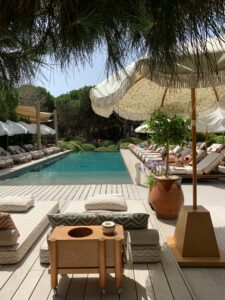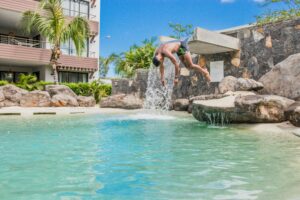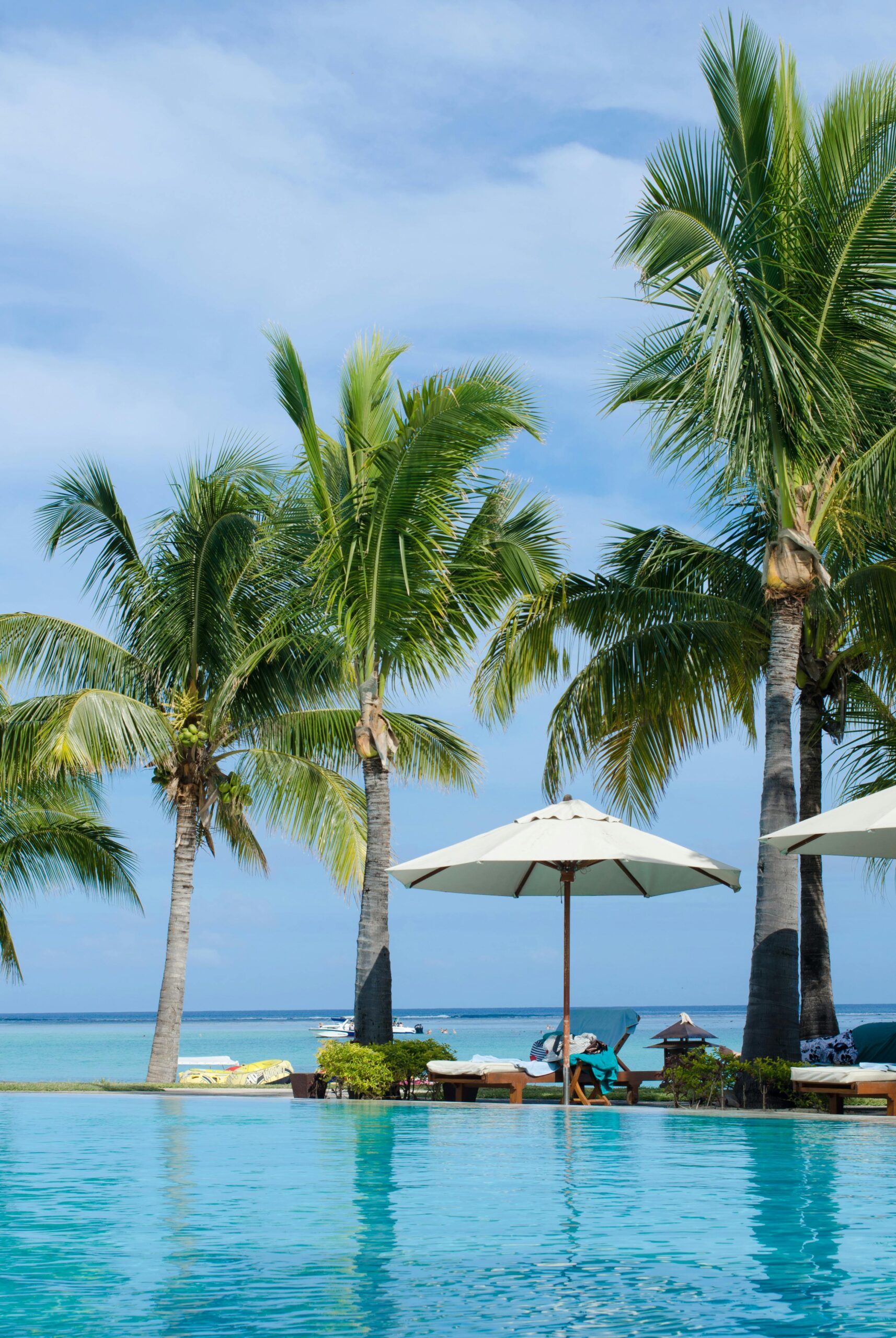Introduction to the Ideal Outdoor Swimming Pool Temperature

It is not only a matter of personal choice to find an appropriate temperature of your outdoor swimming pool. It is the compromise of comfort, safety, and energy efficiency. Excessively hot temperatures can make your pool uninviting, but they also increase power expenses. Excessive cold, and the swimmers may experience cramps, pains, or even illness. Knowing the science and practicality of temperature in pools will make you able to design the right atmosphere everyone will enjoy be it taking a dip, exercise, or safe swimming of children.
Why Pool Temperature Matters for Comfort and Safety
The most obvious reason as to why people regulate their pool temperatures is comfort and safety is a factor of equal consideration. Cold water may give a heart attack to the body thereby making it more difficult to breathe or the muscles may suddenly tighten, particularly not safe in young swimmers and elderly people. Conversely, excessively hot water may initially be comfortable but can easily result in dehydration and dizziness or bacterial proliferation in dirty pools. The correct temperature helps the swimmers to relax, and there is the possibility of injury reduced, and both recreational and athletic usage are safe and pleasant.
Common Misconceptions About Pool Temperature
Most of the owners of pools think that warmer water is always good, which is not the case. Very hot swimming pools may promote the growth of algae and overload the filtration systems. Others believe that outdoor pools have to remain the same temperature throughout the year, but seasonal changing is not only natural but also suggestable. Another myth is that there is only one way of doing things that best suits every activity. As a matter of fact, the optimal pool temperature varies with the activity a given pool is engaged in and the people swimming.
Basics of the Ideal Outdoor Swimming Pool Temperature
What Is Considered the Ideal Pool Temperature?
The optimum temperature in the case of most outdoor pools is between 78 and 82 (25C-28C). This distance is comfortable to most of the swimmers and is also energy efficient. Even below this may be regarded to be too chilly to be employed as a casual, and a rise in temperature would likely raise the energy costs and would pose a maintenance challenge.
Recommended Ranges for Different Activities (Leisure, Exercise, Kids, Seniors)
- Swimming leisure: 78 to 82 o F (25 to 28 o C) is nice.
- Exercises and lap swimming: 7779 F ( 2526 C ) will make sure that the muscles do not overheat.
- Children: 82-84f (28-29c) makes them comfortable, as children dissipate heat quicker.
- Seniors, or to treat: 84-86F (29-30C) promotes comfort at the joint and mild exercise.
Such personalized selections make sure that all the people including competitive swimmers and grandparents can enjoy the pool without any safety concerns.
Seasonal Variations in Outdoor Pool Temperatures
Outdoor pools do not live in vacuum; it is a season depending pool. During summer when it is hot, you might not need to heat up at all, on the contrary, cooling elements such as shade or water spots might be required. During spring and fall heaters or solar covers are used to prolong the swimming season. During cold climates winterization is essential since it is not only expensive to keep high temperatures all year round but it is also not practical.

Factors Influencing Outdoor Swimming Pool Temperature
Climate and Weather Conditions
Sunlight, air temperature and wind play out this role. In warm climates pools can become naturally heated and in cooler or windy areas pools cool faster.
Pool Size, Depth, and Location
The deeper the pools, the colder the water whereas the shallow pools warm faster. A pool on the shade of trees or a building might be kept cooler than one in the open sun. Another difference is the location with respect to the exposure to winds.
Heating Systems and Energy Efficiency
Electric heaters to gas systems and solar panels will all affect the ease at which you can bring the right temperature. Solar systems are economical yet require weather conditions whereas gas heaters are very reliable and expensive.
The Role of Pool Covers and Insulation
One of the most effective and easy-to-use items in terms of temperature control is a properly fitted pool cover. Covers help to minimize heat loss during the night, evaporation, and minimize heating expenses. Walls of the pool and plumbing are also insulated to retain warmth.
How to Maintain the Ideal Outdoor Swimming Pool Temperature
Best Practices for Temperature Control
Consistency is key. Do not turn your heating or cooling a lot in a brief time, do it step by step. Heat with the assistance of the natural sunlight and cover when the pool is not in use to trap in warmth.
Tools and Equipment for Monitoring Temperature
The world now offers digital thermometers, intelligent pool systems and even smartphone apps where one can check the temperature of the pool in real time. You can be certain that your pool is within the target range with these tools and that you do not necessarily have to make guesses.
Cost-Effective Heating and Cooling Solutions
Solar covers, solar rings and heat pumps are ecological saving techniques. To cool it down, shade tents, water features or just running a pump in cooler nights could do the job. It is aimed at striking a balance between comfort and affordability.
Real-World Applications of Managing Pool Temperature
Residential Outdoor Pools
To the house owners, there is enjoyment of the family and more swim season when the temperature is maintained at the correct level. The priority is typically at a balance between comfort and cost efficiency.
Hotel and Resort Pools
In this case, the satisfaction of the guests is obligatory. The reason is that resorts maintain pools at a relatively lower temperature (82 84 o C) to make them as friendly as possible to a large group of visitors of all ages and activity levels.
Competitive and Training Pools
Sportsmen need lower temperatures (approximately 7779 degrees Fahrenheit), that do not help to overheat during strenuous effort. The training and competition standards need consistency.

FAQs
What is the most energy saving pool temperature?
50-78 o F (25-26 o C) – most comfortable and affordable.
Can a pool be too warm?
Yes, over 86 G (30 C) of temperature will be unbearable and encourage the development of bacteria.
How do I keep my pool warm without high energy costs?
Cover with solar covers, maximize the use of the sun and think of solar heating systems.
Is there a universal temperature for all pools?
The best temperature is determined according to the demands of the swimmers, the utilisation of the pool and the climate.
Conclusion
No particular temperature exists of outdoor swimming pool but there exists a range of values that is based on your needs, weather and activity. Having a clue of what influences the temperature, which appliances should be used to check the temperature, and what cost-effective methods should be used to heat or cool the water, you will be able to create the most suitable conditions in the swimming pool.

